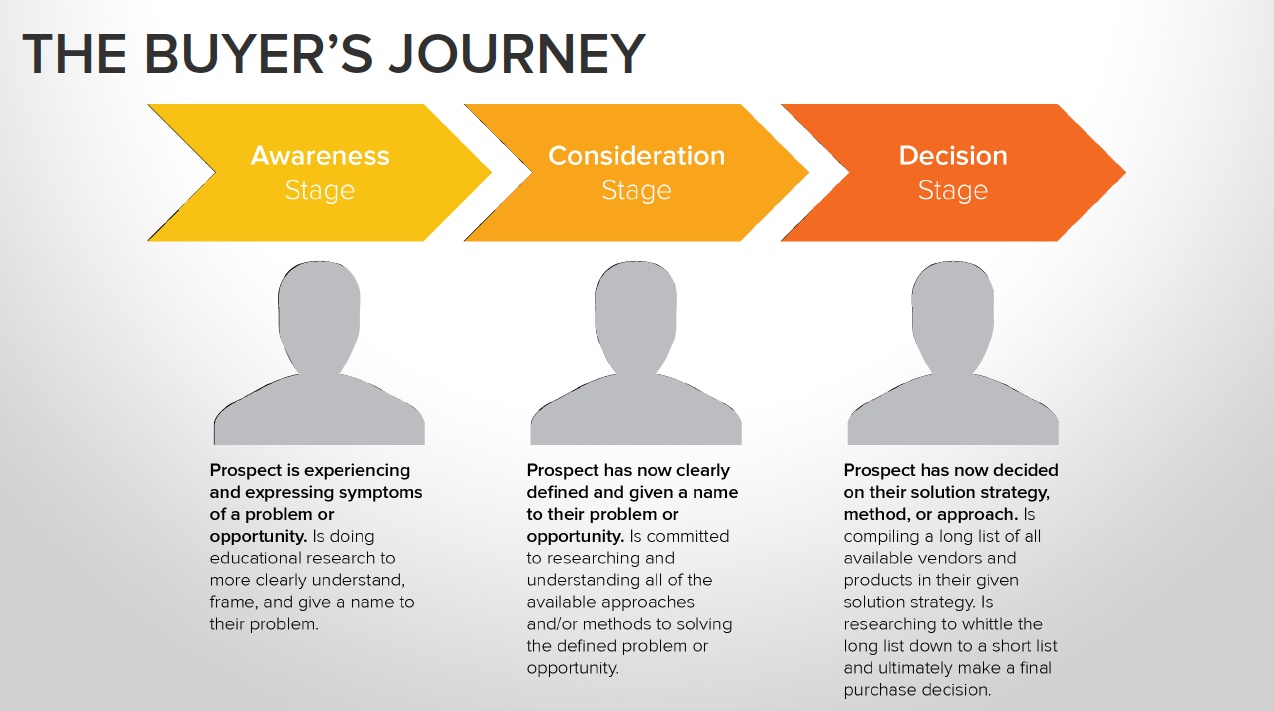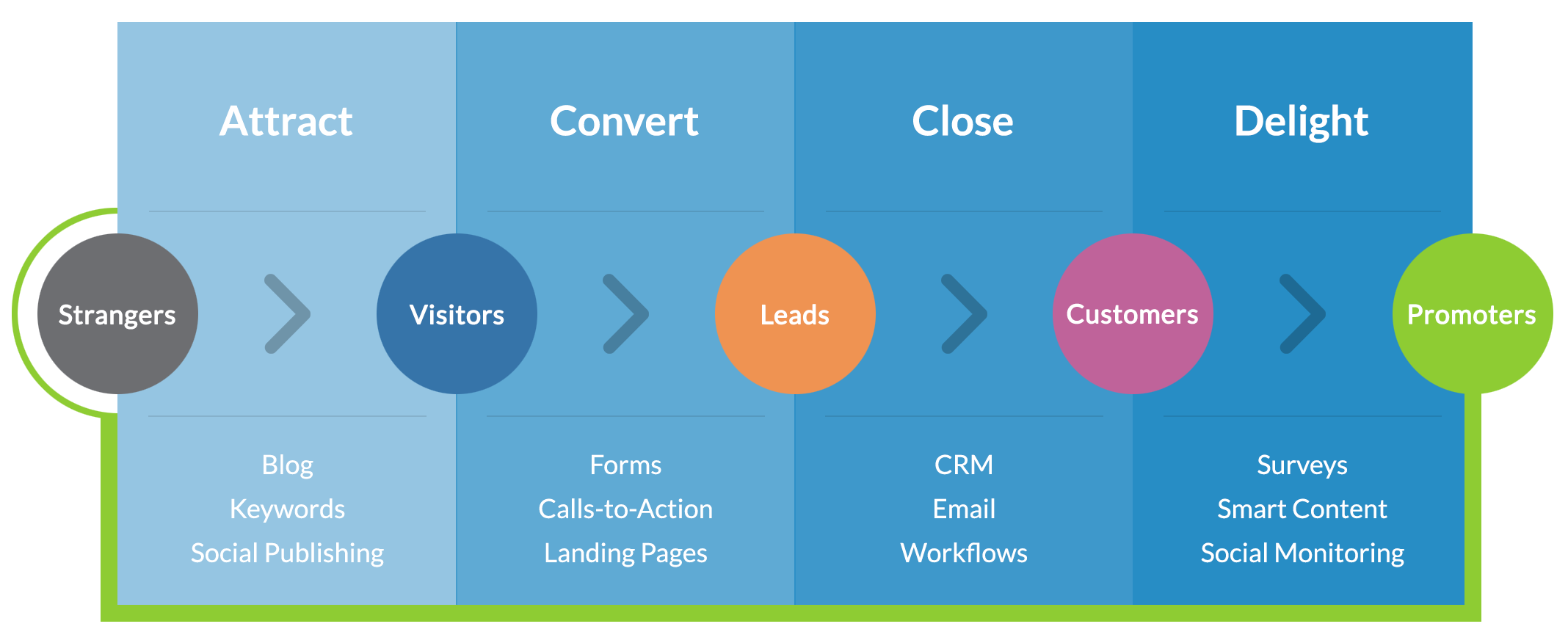There are a lot of people out there with a lot of different opinions on what a content strategy is. In fact, many believe that a content strategy is just the “why” in the who, what, where, when, and why of the title of this post. I don’t really care to argue semantics with other marketers, but I do want to make sure you are in the right place. This blog post will take you through each of the questions in the title:
The Who – Who you are targeting with your content.
The What – Examples of what you might create for your audience.
The Where – Where you will promote this content.
The When – When (and how often) you will be promoting this content.
The Why – Why you are creating content in the first place.
Let’s get to it.
The Who
Buyer Personas
The first step to developing your content strategy is mapping out your buyer personas. Hubspot defines buyer personas as “fictionalized, generalized representations of your ideal customers.” These representations contain a wide array of information about your buyers, such as:
- Where the buyer works & their role in the company
- Goals & challenges of the buyer and the company
- Personal demographics (age, location, education, etc.)
- How the buyer accesses information
Mapping out your buyer personas provides you with a huge foundation of knowledge on which to build your content strategy, so be sure you have some idea of who your buyers are before jumping into development.
The Buyer’s Journey
Developing buyers isn’t the only way to define the “who” of your content strategy, you will also want to take a look at the buyer’s journey. The buyer’s journey is a framework of the process a buyer goes through when discovering, researching, and purchasing a product. It looks like like this:

If you’re looking for something a little simpler, here at Mindscape, we associate these stages with the clear questions below.
- Awareness stage | I have a problem or a need…
- Consideration stage | What options are available to meet this need?
- Decision stage | Which option is best for me?
Let’s take a look at this journey in action.
Let’s say you are an online retailer and you have a customer who has bought all kinds of summer wear from you, but she realizes summer is fading away. It is starting to get cold.
Awareness stage (the problem): She realizes that she does not have enough warm clothes for the colder months of the year.
Consideration stage (the options): She goes to the mall and looks online for stylish hoodies, jackets, and sweaters.
Decision (the choice): She travels to your site, finds a winter item she loves, and purchases it.
Not too hard, is it? And being aware of what stage of the buyer’s journey your buyer is in will help you step further into their shoes, as well as provide you with insight into the “what” stage of your content strategy.
Buyer Persona Segmentation
Lastly, when mapping out the “who” of your content strategy, you will want to consider the amount of interaction a targeted group has had with your brand.
For example, you might map out three different buyer personas, but each of those buyer personas can be segmented based on actions they have taken with your company.
- You might label someone who has had no interaction at all with your company as a stranger.
- You might label someone who has browsed through a few pages of your website as a visitor.
- If they have filled out a form on your website, you might call them a lead.
- If they have purchased one of your products, a customer.
- And if they purchase your products and recommend your brand to others, a promoter.
This segmentation can give you insight into how familiar to be with a specific buyer, what information you should share with the buyer, and how to approach the creation of your content in general.
The What
Based on the stage and segmentation of your buyer personas, your goal will either be to attract, convert, close, or delight your buyers.

Depending on your goal, certain content marketing tactics may work better than others. The list below (and the suggestions in the image above) is a good place to start when deciding on the “what” of your content strategy.
Attract
Paid Search Campaign
Paid Social Campaign
Search Engine Optimization
Blog Post Creation
Convert
Content Offer Creation
Form Integration
Call-to-Action Integration
User Path Optimization
Close
Email Campaigns
Reviews and Testimonials
Price Comparisons
Workflow Development
Delight
Smart Content
Return Customer Offerings
Review and Survey Inquiries
Customer Appreciation Content
The Where
In content marketing where you’re promoting is just as important as what you’re promoting. You can’t just post your content offer to your website and expect leads to just come rollin’ in. You have to meet your buyers where they are.
What social channels are your ideal buyers active on? Are there specific groups your buyers hang out in on these social channels? What search engines do your buyers use? Is this content you want to promote via email or direct mail?
What is the most effective way to get your content in front of your buyers?
The When
Every content strategy needs a content schedule. Now, keep in mind that this schedule won’t be exact. Like your strategy, this should change as you collect data and learn more about your buyers.
To start your content schedule, decide on a few tactics you know you want to employ and the frequency at which you will employ them.
For example, if you will be blogging, how often will you publish a blog? Once a week? Twice a week? What days will you be publishing these posts? What time?
It is good to set these initial standards for yourself, even knowing that they might immediately change. If you don’t have a schedule for creating and publishing your content, your plan may sit stagnate for months after creation.
Download our content calendar template
The Why
This should be the first question you ask when creating your content strategy, but I saved it for the end on the assumption that if you’re reading this post you probably already have some idea of what your “why” is. Each of your content marketing campaigns/projects/tactics should have its own individual goal, but your overall strategy should have one or both of the following two goals.
To increase and improve traffic. To increase and improve conversions.
Be sure that you are aware of what your goal is and thus why you are creating a content marketing strategy before taking the first steps to creating it. Most of your decisions will be informed by this key piece of information.
What’s next?
With these five questions answered, you should have a complete content strategy ready for implementation. If you would like to know more about content marketing, feel free to reach out to us. You can schedule a call with us by clicking below.





